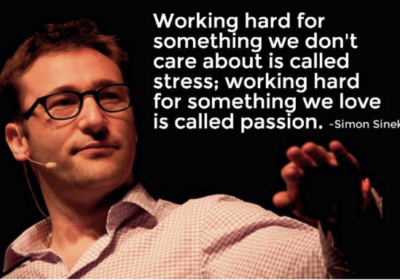
- Stats: 1960 1 0
- Author: Rita Barnett
- Posted: 09/09/2016
- Category: Blog, Health and Wellness
Three vital strategies you need to heal from domestic or family violence
Coming out of a violent relationship can feel as if you just stepped out of a war zone. You have escaped with your life.
All the energy you have left is just to breathe. The experience has been so overwhelming that it’s left you numb and unable to put into words the content of your bleeding heart. You feel battered, broken and bruised, and in some cases, this may be a physical reality.
You must remember that there is nothing that you could have ever done that is justifiable that can leave you in such a state. This time, however, and there have been many times before, you’ve decided to leave for good.
No more, will you be humiliated or demeaned. You have now decided that you want to start again and that it’s time. It’s time to start to work towards your own healing so it can never, ever happen again.
There are three vital elements that go a long way towards a lasting recovery. These include having a support team, awakening the ability to dream and to book into therapy.
1. Have a support team:
When I work with clients I want to know who’s in their team. That is, I want to know who’s in your life that can be depended and relied on. Who are the ones that are going to support, believe and validate your experience? Who are the people you feel safe with and respected by? And importantly, who can you have fun with?
Your team can be a combination of friends and professionals who you trust. When there is a support team in place, a sense of stability and consistency can be established. After the chaos of violence, learning and re-experiencing safe relationships is critical.
2 Be able to dream:
Bessel Van der Kolk, an expert in the treatment of trauma, says that being able to visualise your recovery is crucial to the process. He believes that if you can see it, you can work towards it.
Start to visualise what your life would be like free from the torment that you’ve endured. What can you do now that you couldn’t do then? Who can you see that you couldn’t see then? How do you want to live your life now that you couldn’t do then? Seeing it, then working towards it, helps you do it.
Another point Van der Kolk makes is that surviving trauma has a way of blunting your emotions, where you numb out to the intensity to what you’re feeling. It can be tempting to stay that way as feeling can bring alive what has happened. That is, the trauma is replayed and re-felt, thus, any attempt to feel again is understandably avoided. A safe way to reconnect to your feelings is to find what gives you joy.
To find and feel joy in simple things is the beginning of a process and builds tolerance to more emotions that are more painful. It’s what I like to call an injection of joy that helps immunise you while you start to unpack what you’ve been through.
A variety of ways can include watching children or animals play. Whether you have them in your life, or watch funny clips on YouTube, it’s guaranteed to give you a giggle. Feeling the sun on your back, wrapping yourself up snug in a blanket, having your favourite tea or anything that’s tangible, pleasurable and keeps you in the moment is soothing and reawakening.
For adult survivors of childhood abuse, it can be watching animated movies or cartoons as a means to recapture a part of childhood that has been robbed. Other ‘childlike’ things can be playing board games, or with dolls, finger painting or escaping to a cubby house.
In fact, anything that makes you happy. To do so in safety without the threat of abuse can be very therapeutic. Safety is the key word here so be sure to have a strategy in place in case you’re triggered that enables you to feel present and not in the past where the trauma happened.
3. Go into therapy:
It’s important to remember that there’s nothing wrong with you, something has happened ‘to’ you. This is important to remember and can be a point of reference to go back when your recovery process really challenges you.
During your abuse, you may have spent a lot of time watching and waiting, altering yourself in all sorts of ways to try to suit your abusers mood. You may have tried all sorts of ways to avoid the violence. Your best efforts could not and would not, save you from the decisions your abuser made.
This state of constantly being in high alert, or hypervigilance, means that you’re “switched on’’ all the time looking for danger. It’s incredibly exhausting.
Due to being switched on, your ability to perceive can be altered and often, survivors can see danger where there isn’t any. This means that re-discovering how to stay safe again in everyday life is a huge step in your recovery. An effective therapist can help you do that.
Finding and working with a therapist who understands trauma and with who you feel safe with, is vital. Together with your therapist, you can start to untangle the complexity of what you’re feeling so that you can begin to see things clearly in a way that isn’t tainted by violence.
I know when I work with clients, I like to help them tune into their own voice. For adult survivors it might be happening for the first time in their life. For victims of DV, it may be the case of retuning.
This process can be a bit like tuning into a radio station. All you hear is fuzzy, loud and shrill, then, suddenly, you’ve found it. There’s clarity, there’s direction and discovery.
Tuning in allows you to begin to reconnect to what’s important to you, what you believe in, and find your guiding principles. Writing this out or drawing, or painting it can be helpful ways to process and find the vital elements that make up who you are.
The more you know who you are, the stronger you will be. You’ll start to believe and trust in yourself again. You may even find that you will do more than you ever thought possible.
This will take time!
I don’t believe time is a healer. I believe that it takes time to heal. This is the frustrating part. Many times clients can feel as if they’ve gone one step forward only to take 5 backwards. This is normal and part of the healing process.
It’s important to realise that even though it might feel like you’re going backwards, it’s not possible. Now, you know who you are and what you are capable of so you won’t go back to the state you were in. No one can take that away from you – not even you.
With Love,
Rita Barnett xx
Website: www.ritabarnett.com.au






